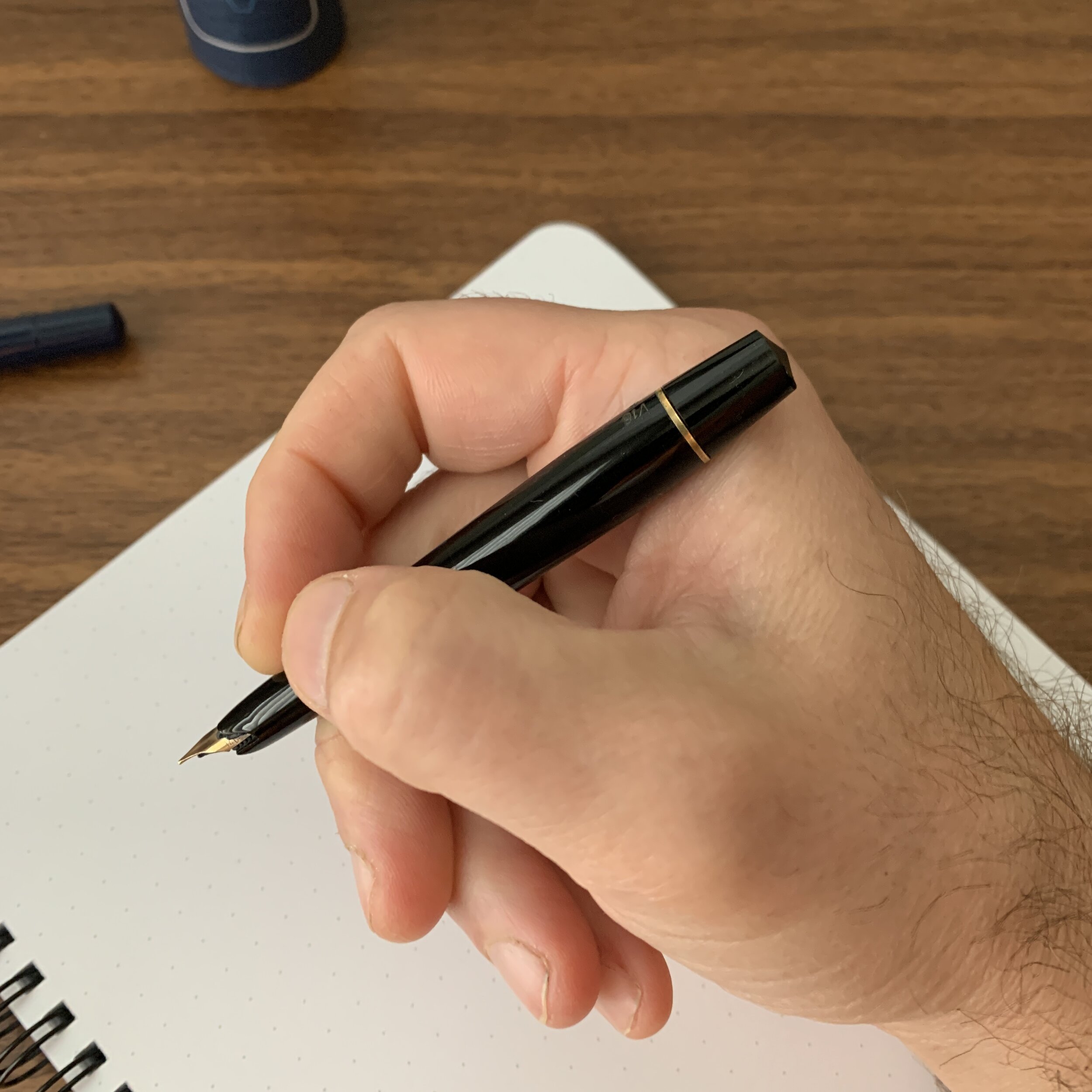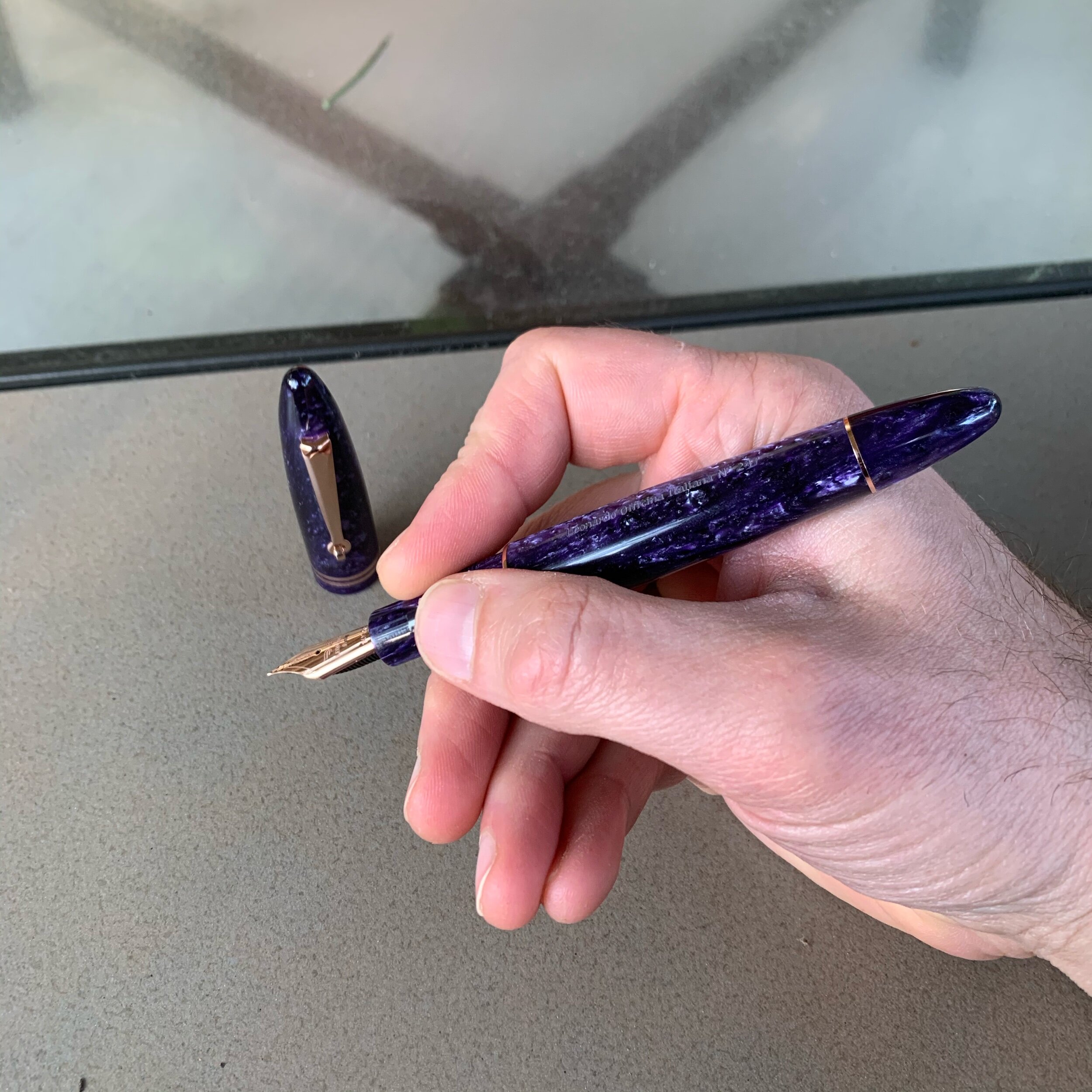One fountain pen rabbit hole that many people tumble down quickly is nib modification. The emergence of a new generation of nib grinder, nibmeisters, nib workers, nib technicians, whatever your preferred term, has formed a major part of the resurgence in fountain pens and fine writing accessories over the past few years. Having a nib ground makes for a great way to add more personality to your writing, and even a simple nib tuning can improve ink flow and performance on some pens that write “inconsistently” out of the box. While it’s great to have these services available, it can add anywhere from $20-80 to the cost of your pen, depending on what work you have done.
I’ve written before on “stock” stub nibs - that is, nibs available from the factory pre-ground or shaped into a stub italic, which adds line variation to your writing in the form of narrow cross-strokes and wider downstrokes. You can read more about these types of nibs, which are advertised as stubs, in this series of posts titled “Stock Stub Nibs: Exploring Specialty Nibs” and “Exploring Stock Stub Nibs, Part II: Higher-End Options.”
A close-up of the slightly squared off, “stubbish” broad nib on my Montblanc 149.
What I would like to write about today is a bit different: those nibs sold by pen companies as standard extra-fines, mediums, or broads, but which don’t write like a typical rounded nib. Here are a few of my own “secrets”:
Lamy Studio 14k Extra-Fine Nib. I have no idea whether other 14k Lamy “Z” nibs exhibit this characteristic, because they tend to be a bit too wet for me and I stick to the extra-fine, but I’ve noticed that this nib shows subtle architect-like qualities. “Architect” or “Hebrew Italic” nibs are essentially the reverse of your classic stub or italic, and show broad cross-strokes and narrow downstrokes. It’s a relatively expensive grind, so if you’d like a pen that writes with this style of line variation, especially one with a gold nib, the “premium” version of the Lamy Studio is an option that I can highly recommend.
Platinum Curidas Stainless Steel Medium Nib. One of the more pleasant surprises of 2020 (and there have been relatively few of them), was the medium stainless steel nib on Platinum’s new Curidas retractable fountain pen. Though I had to replace a scratchy, dry fine nib, the medium nib arrived with perfect ink flow and subtle, yet still stubbish, line variation.
Lamy 2000 Broad Nib. Sometimes described as a “shovel,” the 21k Lamy 2000 broad nib leaves a broad, wet line with definite stubbish characteristics. I’ve written many pieces on my love for the Lamy 2000 fountain pen (as well as the other versions) in the past, so I won’t repeat myself here.
Montblanc Broad, BB, and BBB Nibs. Many high-end pen companies such as Montblanc don’t offer a “stock” stub option, at least not in name. It can be scary to spends as much as $600-$1000 on a brand new Montblanc pen and send it off for nib work that automatically voids the warranty. Standard Montblanc broad, double-broad, and triple-broad nibs can be extremely stubbish to begin with, so if you want a stub, before you make an appointment with a nib grinder, consider ordering one of these stock nib sizes and trying it out unmodified first.
The fairly sharp, squared-off broad nib on my Lamy 2000 Stainless Steel model.
“Stub” Writing Samples
This particular Studio 14k nib isn’t the absolute best example, but you can still see the subtle architect-like shaping of the tipping material. Others I have in my collection might be slightly more pronounced.
Note the slightly broader cross-strokes on the writing sample from the Lamy Studio.
As you can see from these writing samples (all done on Baron Fig Mastermind paper, for reference), if you’re thinking of one of these nib modifications, consider trying stock nibs first. You may be pleasantly surprised. Of course, YMMV with each individual nib, and there is always the chance that you’ll get one that isn’t stubbish at all, or that writes a more or less pronounced line than the ones pictured here. It always helps to let the pen store know exactly what you’re looking for, especially with brands like Montblanc, and they try their best to pick out the best nib for your needs.
These are just examples that I pulled from pens in my own collection. I want to open this up for comments! Are there any other nibs you’re aware of that should be on this list?
Disclaimer: This post contains links to paid sponsors and affiliates.










